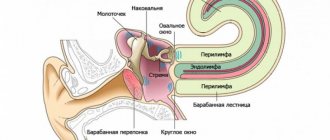Features of modern adaptation
Studying at school, moving from one level to another and admission itself always requires special expenses from the child. But the situation of entering school deserves special consideration, especially since over the past few years it has acquired new features while maintaining established ones.
- Technological progress and the informatization of society, as well as the introduction of educational standards, complicate the adaptation process.
- Federal state educational standards require serious expenses (physical, moral, psychological) from first-graders. In addition to the usual educational knowledge, skills and abilities, the child needs to achieve subject, meta-subject and personal results, to correspond to the portrait of a primary school graduate.
- Overnight, the first grader finds himself in a new status and role, environment, system of responsibilities and rights. The child receives an endless stream of new information.
Adaptation to school is a kind of difficult life situation for the child and parents. At the same time, it is the primary adaptation to school that influences the entire further educational, professional and personal path of the individual.
What is adaptation to school
The problem of school adaptation is at the intersection of a number of sciences (psychology, pedagogy, sociology, medicine). Speaking about school adaptation, we will consider it as a psychological and pedagogical phenomenon.
- The very concept of adaptation relates to biology and means the adaptation of an organism to changing environmental conditions. According to V.I. Dolgova’s definition, adaptation is the process and result of internal changes, external active adaptation and self-change of the individual to new conditions of existence.
- For a person, this is a process of assimilation of norms and values, changing conditions, responsibilities and requirements.
School adaptation is the process of a child’s acceptance and assimilation of the social situation of schooling, his new status (school student) and new systems of interaction (“child – teacher”, “child – peer”); developing new means of behavior.
From a psychological point of view, school adaptation can be characterized by 4 specific criteria:
- The child’s mastery of a new social situation in the unity of its components.
- Acceptance of a new social position and status, reflected in the internal position of the student.
- Mastering new forms and means of social interaction in the emerging systems “student - teacher”, “student - student”.
- Differentiation of the “child – adult” relationship, purposeful restructuring of the child’s entire lifestyle (the initiator and manager is the adult).
The period of adaptation to school can last from 2-3 months to a year. Therefore, the first class is considered the most difficult and important.
Structure and types of adaptation
Adaptation to school is a systemic process. It is divided into social, physiological and psychological adaptation, each of which goes through:
- orientation phase (2-3 weeks);
- unstable adaptation (2-3 weeks);
- relatively stable adaptation (from 5-6 weeks to a year).
In the first phase, all systems of the body are tensed, in the second – the body is looking for optimal solutions, in the third – the tension subsides, the body’s systems return to normal, and stable forms of behavior are developed.
Social adaptation
Requires the ability to:
- listen;
- respond to the teacher;
- complete tasks independently;
- organize and analyze their implementation.
At the same time, it is important to be able to establish contacts with peers and adequately evaluate oneself and others.
Physiological adaptation
It assumes that the body is tense due to heavy loads. Regardless of what kind of activity a child is engaged in at school, his body works to the limit. This is dangerous due to overwork.
Psychological adaptation
Depends on the child's readiness for school. Assumes:
- desire to learn and complete tasks;
- the desire for their successful implementation and understanding.
A developed ability to remember and process information is important. You can read more about this element in the article “Is the child ready for school: ways to check, recommendations for parents.”
Impact of adaptation
From the above it follows that school adaptation affects the entire body and personality as a whole. We can distinguish 3 main areas and characteristic changes in them during dysfunctional adaptation:
- Mental (cognitive component). When problems arise, internal tension (anxiety) and stress arise.
- Psychophysiological (emotional component). When problems occur, emotional maladjustment and physical manifestations of stress occur.
- Psychosocial (behavioral component). In case of problems, it is noted that it is impossible to form new communication connections.
This can be tracked (table below).
| Components of adaptation | Criteria | Indicators |
| Cognitive | The level of development of self-awareness, the presence of skills, opinions, attitudes, stereotypes, views, knowledge about school | The child’s awareness of his rights and responsibilities, the presence of adequate ideas about what school is needed for |
| Emotional | Self-esteem, level of aspirations | Adequate self-esteem, high level of aspirations |
| Behavioral | Child’s behavior at school, relationships with other people | The desire to meet the role expectations of adults, a formed idea of one’s social role, and appropriate behavior |
Criteria and indicators of a child’s adaptation to school (according to V.V. Gagai)
Signs of successful adaptation to school
- The child’s satisfaction with the learning process, mastery of learning skills.
- Independent organization of educational activities and homework; appropriate behavior.
- Satisfaction with relationships with teachers and classmates; established contact.
Levels of adaptation
A. L. Wenger identified 3 levels of school adaptation (low, medium, high) and the following components of school adaptation: attitude towards school, interest in educational activities, behavior, position in the class (see table below).
| Level of adaptation | Student characteristics |
| Short | Negative or indifferent attitude towards school; lack of interest in studying; often violates discipline, ignores assignments, needs direction and control from parents and teachers; has no friends, knows some classmates by name |
| Average | Has a positive attitude towards school; easily copes with basic material; maintains discipline and carries out assignments; is friends with classmates |
| High | Has a positive attitude towards school; absorbs even additional material quickly and easily; takes initiative in class activities; class leader |
Levels of school adaptation (A. L. Wenger)
From the table it can be stated that a low level indicates the student’s maladjustment, a medium level indicates mild manifestations of maladjustment and risks, a high level indicates the successful adaptation of a first-grader.
Adaptation in childhood
One of the most important stages in the life of any person. Each of us went through psychological adaptation to school.
Entering this educational institution is an exciting and difficult period, both for a first-grader and for his parents. Everything changes: from the social situation to the child’s social circle. The demands placed on him are increasing, and his range of responsibilities is expanding significantly. And how successful the psychological adaptation to learning will be will determine his academic performance, well-being and even health.
Psychologists call the age of 6-7 years a crisis. It is at this stage that the need for initiative, activity and independence is formed. The child loses his spontaneity, his self-esteem begins to form, he tries himself in the role of a schoolchild, a student. Play activities fade into the background, and studies come to the fore. Naturally, the child begins to strive for independence. In addition, it is during this period that verbal and logical thinking, attention and memory actively develop.
In addition to all this, he also has to adapt to unusual conditions. Getting to know your classmates, building relationships with the teacher, having to sit still patiently for long periods of time and being disciplined. This is very difficult for a child, since all of the above requires organization and responsibility.
It is not surprising that difficulties result in such consequences as poor appetite, increased fatigue, headaches, moodiness, depression, frequent mood swings, and even anger and a negative attitude towards school.
To prevent this from happening, parents and teachers must help the child. Respect, love, support, as well as a competent explanation of what is happening in simple words - this is very important. As a rule, within two to three months children integrate into school life.
Adaptation Success Factors
The success of adaptation to school depends on a number of factors. External and internal factors of school adaptation are distinguished.
- External ones include relationships with the class, teacher and family.
- Internal ones include educational motivation, readiness for school, health and stress resistance of the child.
External and internal factors are interconnected. There is no consensus on what is secondary and determines the rest. This issue has not been fully studied. But many psychologists and teachers (S. N. Vereykina, G. F. Ushamirskaya, S. I. Samygin, T. S. Koposova, M. S. Golub, V. I. Dolgova) agree that the family is paramount. The child’s health (physical, psychological and mental), preparation for school, educational motivation and the ability to establish social contacts depend on the child-parent relationship.
Problems with adaptation in society
They occur in many people. And this is called maladaptation. It happens in situations where a person fails to cope with the difficulties of new conditions, assert himself and improve relationships with others. It is difficult for him to take a comfortable position.
Problems arise for two reasons. These are either external, environmental factors (society itself), or personal characteristics of a person (uncertainty, lack of communication skills, etc.).
The first reason does not depend on the will of man. But internal factors are in most cases a very specific psychological problem. And a person, as a rule, knows about its presence. But either he doesn’t want to or can’t eliminate it.
Also, difficulties with adaptation are experienced by individuals whom society systematically infringes, suppresses and places excessive demands on them. Because of this, many people “break down,” which often leads to psychopathology.
The most obvious sign of maladjustment is the painful experience of intrapersonal or interpersonal conflicts. And this becomes the reason why a person is unable to satisfy his needs or meet the requirements imposed by society.
The role of family in adaptation
V.I. Dolgova calls the child-parent relationship the main factor in a child’s adaptation. The author, in her study to identify the influence of family education style on school adaptation, relied on 2 indicators of adaptation success: anxiety and educational motivation. The results of the study showed the following:
- in families with the “symbiosis” type, children experience increased anxiety;
- high parental control contributes to a decrease in the child’s educational motivation;
- The “cooperation” style and the ability of parents to accept the child’s failures contribute to the reduction of anxiety.
The best position (style) in the family when adapting a first-grader is recognizing the child as an active subject of family relations; adequate control in the form of emotional acceptance of the child and voluminous, clear, feasible, consistent requirements.
Children from such families adapt well to school. They:
- active (socially, physically and communicatively);
- are proactive;
- independent;
- empathic and friendly.
However, what really prevails in most families is the subject-object attitude of parents towards the child. This causes problems with the child’s adaptation and socialization.
How to adapt?
This is a question many people ask. Adaptation is a complex and continuous process. Almost every person is constantly in changing conditions. Kindergarten, school, university, army, one job, another, transfer to a new place... A person is simply forced to look for ways to “place” himself in a given situation and environment as comfortably and conveniently as possible.
And relationships with other people help you adapt. This is a way to get support. It is worth starting relationships with those people who seem similar to a person. If he likes someone, then there is a chance that it will be mutual - that’s how people are made. By unobtrusively showing kindness, a person receives it in return.
Many people have problems with adaptation precisely because it is difficult for them to find a common language with others, get used to new people, and get to know each other. Nowadays, learning to communicate is not so difficult - there is the Internet and social networks where you can make virtual friends and try to build relationships with them first.
But what about in reality? They say that to gain people's favor, you don't even need to speak. It is enough just to listen carefully to others. A good listener is worth his weight in gold, because nowadays most people only talk about themselves.
Sooner or later, such a person begins to be asked for advice, get an opinion, and ask for an assessment. And thus integration into society occurs. The main thing is not to be a listener to the detriment of yourself, that is, spend only some of your free time on it.
Afterword
School adaptation is a crisis situation, since the child finds himself in new conditions without the appropriate “tools” and experience of similar situations. Studying in the first grade coincides with the 7-year crisis. This makes the adaptation process even more difficult. The period of school adaptation can be called a contradictory period of transformation of a preschooler into a schoolchild.
If the child is ready for school and has the support of the family and teacher, school adaptation can take place in 2-3 months. Otherwise, the process may last for a year and be accompanied by problems or result in maladaptation (the child’s inability to psychologically and physically accept a new way of life).
The democratic style of education has a beneficial effect on the development of the child and his adaptation to any conditions. Child-parent relationships in which each family member acts as an active subject, is interested in the affairs of others, supports, is involved in everything that happens and expects the same from others.
—>
The concept of adaptation (from the Latin word adapto-adapt) arose in biology and is considered in it as the adaptation of the structures and functions of the body, its organs and cells to environmental conditions. Social adaptation is considered as an individual’s adaptation to the conditions of the social environment; it is one of the main socio-psychological mechanisms of personality socialization, which includes the individual’s acceptance of a social role.
Social adaptation includes:
- adequate perception of the surrounding reality and oneself;
- successful communication and adequate relationships with others;
- ability to work, study and organize leisure and recreation;
- ability for self-service and self-organization;
- variability of behavior in accordance with role expectations.
The importance of social adaptation increases in conditions of a radical change in a person’s activity and social environment. For students in first, fifth, and tenth grades, their social environment (new class composition and/or teachers) and system of activity (content of the new level of education) changes. The situation of novelty is always alarming to one degree or another for a person. In such conditions, the child experiences emotional discomfort due to the uncertainty of ideas about the requirements of teachers, the characteristics and conditions of education, the values and norms of behavior in the class team, etc. This state is often accompanied by internal tension, which sometimes makes it difficult to make both intellectual and personal decisions . Sufficiently long-term mental stress can result in school maladaptation and the child then becomes undisciplined, inattentive, irresponsible, lags behind in studies, gets tired quickly and no longer wants to go to school. Somatically weakened children (and their number is increasing) are the most susceptible to maladjustment.
Of course, a child’s adequate perception of his school environment and successful establishment of relationships with classmates and new teachers are very difficult if he has a high level of personal and school anxiety. Thus, the learning process itself becomes more complicated, and productive work in the classroom becomes problematic. Even a potential excellent student can turn into a struggling student.
The process of adaptation of students becomes no less important for teachers who, knowing little about their students, may make mistakes in assessing their capabilities, successful individualization and differentiation of learning. Therefore, teachers need to timely adjust their own pedagogical position regarding the class and individual students.
InterpretationTranslation LEVEL OF ADAPTATION Neutral position in the sensory continuum; in special usage: the level to which the sense organ has adapted. Based on this concept, Harry Helson developed a whole theory of sensory-contextual influences. This theory states that neutral stimuli to which the subject has already adapted provide the background against which new stimuli are perceived. Thus, for example, cool water may feel warm if the subject has previously adapted to fairly cold water. Although the theory was developed in relation to sensory processes, it has been widely used in areas far from the sensory continuum, especially in the study of attitudes and changes in attitudes.
Explanatory dictionary of psychology. 2013.
Other books on request “ADAPTATION LEVEL” >>Sources used:
- https://studwood.ru/675093/psihologiya/urovni_vidy_protsessa_adaptatsii
- https://psychologist.tips/849-psihologicheskie-osobennosti-adaptatsii-rebenka-k-shkole-vidy-i-urovni-adaptatsii.html
- https://studopedia.ru/9_221824_ponyatie-i-osobennosti-adaptatsii.html
- https://psychology_dictionary.academic.ru/8614/adaptation_level
How to write a term paper on speech therapy
07.09.2010 221430
These guidelines are compiled to help students gain an understanding of the content and structure of coursework in speech therapy.
Logopedia of pedagogical science that studies anomalies of speech development with normal hearing, explores the manifestations, nature and mechanisms of speech disorders, develops the scientific basis for overcoming and preventing them means of special training and education.
The subject of speech therapy as a science is speech disorders and the process of training and education of persons with speech disorders.
The object of study is a person suffering from a speech disorder.
The main task of speech therapy as a science is the study, prevention and elimination of various types of speech disorders.
Coursework in speech therapy is a student's scientific and experimental research. This type of educational activity, provided for by the educational and professional program and curriculum, contributes to the acquisition of skills in working with literature, analyzing and summarizing literary sources in order to determine the range of insufficiently studied problems, determining the content and methods of experimental research, processing skills and qualitative analysis of the results obtained. The need to complete coursework in speech therapy is due to the updating of knowledge concerning the content, organization, principles, methods and techniques of speech therapy work.
As a rule, during their studies, students must write two term papers - theoretical and practical.
The first course work should be devoted to the analysis and synthesis of general and specialized literature on the chosen topic. Based on this analysis, it is necessary to justify and develop a method of ascertaining (diagnostic) experiment.
In the second course work, it is necessary to provide an analysis of the results obtained during the ascertaining experiment, as well as determine the directions and content of speech therapy work, and select adequate methods and techniques of correction.
So, let’s present the general requirements for the content and design of coursework in speech therapy.
The initial and most important stage of working on a course project is the choice of a topic, which is either proposed by the supervisor or chosen by the student independently from a list of topics that are consistent with the areas of scientific research of the department.
Each topic can be modified, considered in different aspects, but taking into account a theoretical and practical approach. Having chosen a topic, the student needs to think through in detail its specific content, areas of work, practical material, etc., which should be reflected both in the formulation of the topic and in the further construction of the study. It should be recalled that the chosen topic may not only have a purely theoretical orientation, for example: “Dysarthria. Characteristics of the defect”, “Classification of dysgraphia”, but also take into account the practical significance of the problem under consideration, for example: “Speech therapy work on speech correction for dysarthria”. It should also be taken into account that when formulating a topic, excessive detail should be avoided, for example: “Formation of prosodic components of speech in preschoolers of the sixth year of life attending a preschool institution for children with severe speech impairments.”
The course work includes such mandatory parts as: introduction, three chapters, conclusion, bibliography and appendix.
The text of the term paper begins with the title page . An example of its design can be seen here.
Then the content of the work is given, in which the names of chapters, paragraphs, and sections are formulated in strict accordance with the content of the thesis. An example of its design can be seen here.
In the text, each subsequent chapter and paragraph begins on a new page. At the end of each chapter, the materials are summarized and conclusions are formulated.
The introduction reveals the relevance of the problem under consideration in general and the topic being studied in particular; the problem, subject, object, and purpose of the study are defined. In accordance with the goal and hypothesis, objectives and a set of research methods aimed at achieving the objectives must be defined.
The relevance of the topic lies in reflecting the current level of pedagogical science and practice, meeting the requirements of novelty and usefulness.
When defining the research problem, it is important to indicate what practical tasks it will help to implement in training and educating people with speech pathology.
The object of research is understood as certain aspects of pedagogical reality, perceived through a system of theoretical and practical knowledge. The ultimate goal of any research is to improve this object.
The subject of research is some part, property, element of an object, i.e. the subject of research always indicates a specific aspect of the object that is to be studied and about which the researcher wants to gain new knowledge. An object is a part of an object.
You can give an example of the formulation of the object, subject and problem of research:
– The object of the study is the speech activity of preschool children with phonetic-phonemic speech disorders.
– The subject of the study is the features of intonation speech of children with phonetic-phonemic speech disorders.
– The research problem is to determine effective directions for speech therapy work on the formation of intonation expressiveness of speech in the system of correctional intervention.
The purpose of the study contributes to the specification of the object being studied. The goal of any research is to solve a specific problem. The goal is specified in tasks taking into account the subject of research.
The research objectives are formulated in a certain sequence, which determines the logic of the research. The research objectives are set on the basis of a theoretical analysis of the problem and an assessment of the state of its solution in practice.
The first chapter is an analysis of literary sources, which examines the state of this problem in historical and modern aspects, and presents the most important theoretical principles that formed the basis of the study.
When writing the first chapter, you should pay attention to the fact that the text of the course work must be written in a scientific style. When presenting scientific material, it is necessary to comply with the following requirements:
– Specificity – a review of only those sources that are necessary to disclose only a given topic or solve only a given problem;
– Clarity – which is characterized by semantic coherence and integrity of individual parts of the text;
– Logicality – which provides for a certain structure of presentation of the material;
– Reasoning – evidence of thoughts (why this and not otherwise);
– Precision of wording, excluding ambiguous interpretation of the authors’ statements.
A literary review of the state of the problem being studied should not be reduced to a consistent presentation of literary sources. It should present a generalized description of the literature: highlight the main directions (currents, concepts, points of view), analyze in detail and evaluate the most fundamental works of representatives of these directions.
When writing a work, the student must correctly use literary materials, make references to the authors and sources from which the results of scientific research are borrowed. Failure to provide required references will reduce your coursework grade.
As a rule, in coursework on speech therapy, references to literary sources are formatted as follows: the number of the cited source in the general list of references is placed in square brackets. For example: General speech underdevelopment is a speech pathology in which there is a persistent lag in the formation of all components of the language system: phonetics, vocabulary and grammar [17].
When using quotations, in square brackets, in addition to indicating the source number, the page number from which this excerpt is taken is indicated, for example: Speech rhythm is based on a physiological and intellectual basis, since, firstly, it is directly related to the rhythm of breathing. Secondly, being an element that performs a communicative function, “correlates with meaning, i.e. controlled intellectually” [23, P.40].
However, course work should not be of a purely abstract nature, so you should not abuse the unreasonable abundance of citations. Quoting should be logically justified, convincing and used only when really necessary.
In the second chapter , devoted to experimental research, the organization should be described and the program of the ascertaining experiment should be presented. The survey methodology, as a rule, consists of a description of several series of tasks, with detailed instructions, visual and lexical material, the procedure for completing tasks by experiment participants, and scoring criteria. This chapter also provides a qualitative and quantitative analysis of the results obtained.
When analyzing the results of an experiment, it is necessary to use a scoring system. Examples of various criteria for quantitative and qualitative assessment are presented in the following works:
– Glukhov V.P. Formation of coherent speech in preschool children with general speech underdevelopment. - M.: Arkti, 2002. - 144 p.
– Fotekova T.A. Test methodology for diagnosing oral speech of primary schoolchildren. - M.: Arkti, 2000. - 56 p.
– Levchenko I.Yu. Pathopsychology: Theory and practice. - M.: Academy, 2000. - 232 p.
In order to visually present the results obtained during the experimental study, it is recommended to use tables, graphs, diagrams, etc. Histograms can be used in a variety of ways - columnar, cylindrical, planar, volumetric, etc. An example of the design of tables, figures, and histograms can be found here.
The third chapter provides a rationale for the proposed methods and techniques and reveals the content of the main stages of correctional work.
The conclusion contains a summary of the material presented and the main conclusions formulated by the author.
The bibliography must contain at least 25 sources. The list includes bibliographic information about the sources used in preparing the work. An example of its design can be seen here.
In the application you can present bulky tables or illustrations, examination protocols, observation records, products of activity (drawings, written works of children), notes from speech therapy classes, etc.
The volume of one course work must be at least 30 pages of typewritten text.
In general, coursework in speech therapy is the basis for a future thesis, in which the study of the begun problem can be continued, but from the standpoint of a different approach or a comparative analysis of the disorders being studied in different age categories of people with different types of speech disorders.
The content and format of theses in speech therapy can be found here.
Literature:
1. How to write a term paper on speech therapy: Methodological recommendations. Educational and methodological manual / Comp. Artemova E.E., Tishina L.A. / Ed. Orlova O.S. – M.: MGOPU, 2008. – 35 p.
2. Research work of students in the system of higher professional pedagogical education (specialty 031800 - Speech therapy). Methodological recommendations for completing the thesis / Compiled by. L.V. Lopatina, V.I. Lipakova, G.G. Golubeva. - St. Petersburg: Publishing house of the Russian State Pedagogical University named after. A. I. Herzen, 2002. - 140 p.









